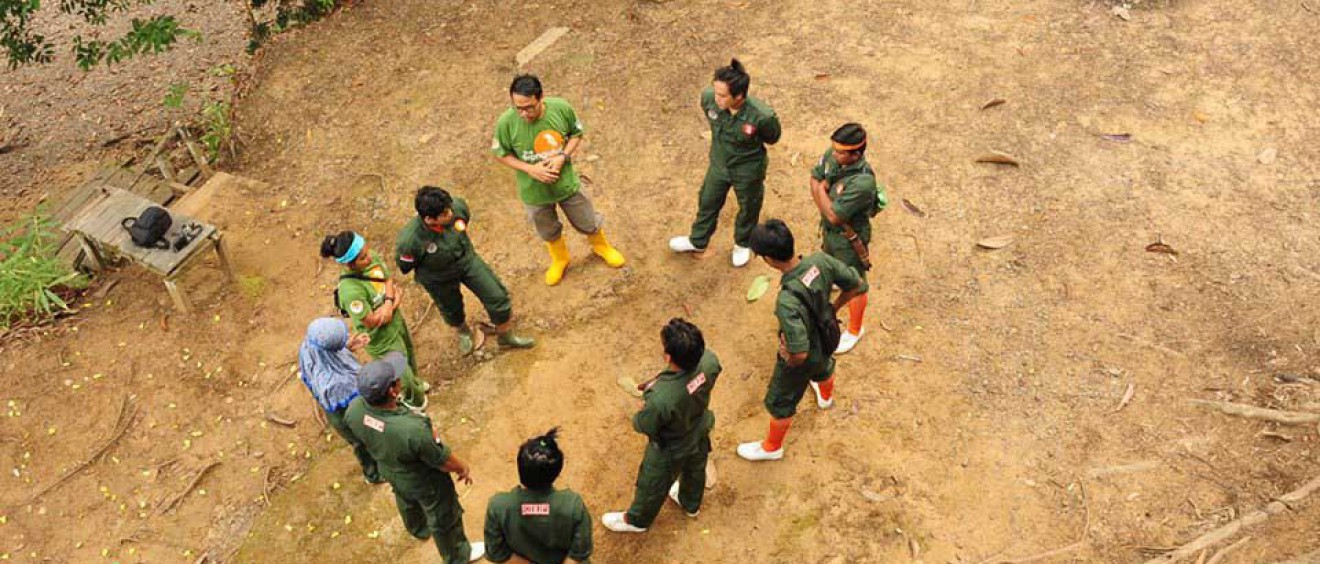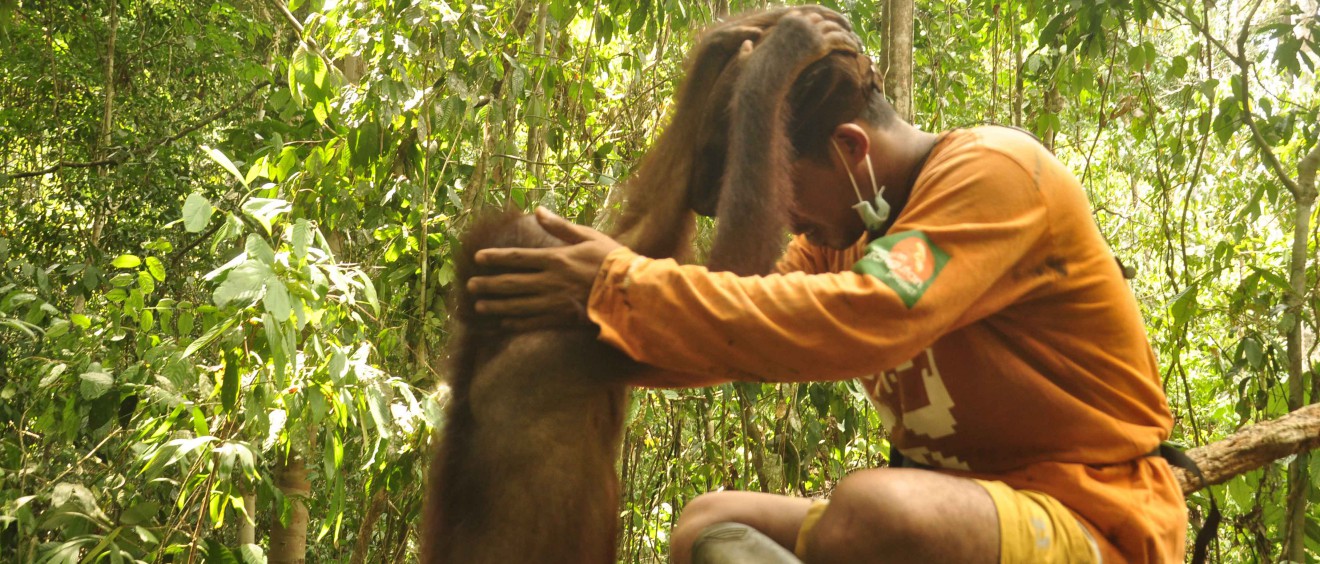Finally, after the long road of medical check up and administration process of the release of four orangutans that will be held this year in Lesan River Protected Forest (HLSL), Berau, East Kalimantan, orangutan Leci and Novi were released on Nov 3rd, 2018. The release was the second COP’s ex-rehabilitated orangutan release after the release of orangutan Oki in 2017.
“There will be two possibilities, either they will go straightly into the jungle or turn back and attack the guests. Then, please do not get closer to the cage.”, said Reza Kurniawan, the Captain of APE Guardian team, a moment before release while directing guests to stand behind the COP line which was at a distance of 20 m to the cage. I was worried that Leci and Novi would turn back and attack the guests. But, when the first cage opened by Ir. Saerozi Ahmad, the head of B2P2EHD, with Hardi Baktiantoro, the principal of COP, Leci came out briskly into the jungle, climbed a tree,and hang on the tree. And not long after, the second cage containing Novi was opened by Ir. Sunandar Trigunajasa, the Head of BKSDA of East Kalimantan with Hardi Baktiantoro, Novi came out and walked into the forest.
After a moment, a sound came from above the tree. It was Leci and Novi meeting up! They looked like hugging each other and holding hands as they were hanging on the trees. As if they were delighted to return to their habitat. Welcome back home, Leci and Novi! Hope you both always be healthy and happy! (SAR)
KEMBALI KE RUMAH, LECI DAN NOVI BERPELUKAN BAHAGIA
Akhirnya, setelah perjalanan panjang pemeriksaan medis dan urusan administrasi untuk pelepasliaran 4 individu orangutan yang akan dilepasliarkan tahun ini di Hutan Lindung Sungai Lesan (HLSL), Berau, Kalimantan Timur, orangutan Leci dan Novi dapat dilepasliarkan pada tanggal 3 November 2018 yang lalu. Pelepasliaran ini adalah pelepasliaran kedua dari orangutan eks-rehabilitasi COP setelah pelepasliaran orangutan Oki Tahun 2017 yang lalu.
“Terdapat dua kemungkinan saat orangutan dilepasliarkan, entah dia akan langsung masuk ke dalam hutan atau berbalik menyerang ke arah kita. Jadi mohon jangan mendekat ke arah kandang.”, ujar Reza Kurniawan, kapten tim APE Guardian, sesaat sebelum pelepasliaran sambil mengarahkan para tamu untuk berdiri di belakang garis COP yang berjarak 20 m dari kandang pelepasliaran. Sempat cemas kalau-kalau Leci dan Novi akan berbalik dan menyerang para tamu. Namun saat kandang pertama dibuka oleh Ir. Saerozi Ahmad, kepala B2P2EHD, bersama Hardi Baktiantoro, ketua COP, Leci keluar dengan lincahnya masuk ke dalam hutan dan langsung memanjat dan bergelantungan di atas pohon. Lalu tidak lama setelahnya, kandang kedua yang berisi Novi dibuka oleh Ir. Sunandar Trigunajasa, Kepala Balai KSDA Kaltim bersama Hardi Baktiantoro. Novi pun keluar dan berjalan masuk ke hutan dengan cepat. “Untung saja tim dokumentasi sudah bersiap, kalau tidak, momen itu akan terlewat.”, ujar Sari Fitriani, alumni COP School Batch 8 yang ikut terlibat dalam persiapan pelepasliaran Novi dan Leci.
Lalu tidak lama kemudian, terdengar suara dari atas pohon. Ternyata Leci dan Novi bertemu! Mereka seperti berpelukan dan berpegangan tangan sambil bergelantungan di atas pohon. Seakan-akan sangat senang dapat kembali ke habitat aslinya. Selamat kembali ke rumah Leci dan Novi. Semoga sehat dan selalu! (SAR)



